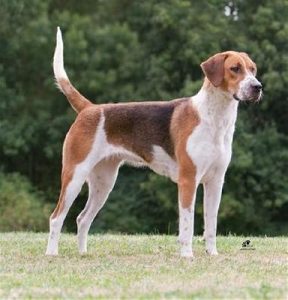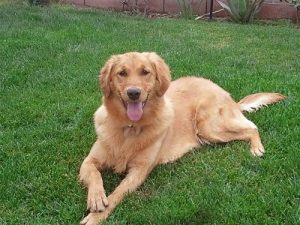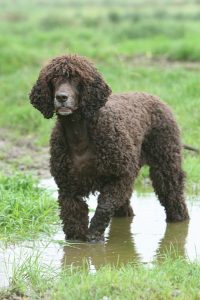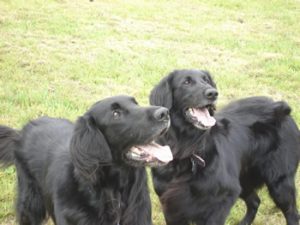Boxer

Thonotosassa FL 33592 United States
The mission of Second Chance Boxer Rescue (SCBR) is to rescue, rehab, and re-home dogs throughout...

Atlanta GA 30126 United States
Atlanta Boxer Rescue is a non-profit organization that strives to rescue, medically rehabilitate,...

River Ridge LA 70123 United States
Louisiana Boxer Rescue (LaBR) is an all volunteer, non profit, tax exempt 501(c)(3) organization ...
Hampstead, NC 28443, United States
We rescue Boxers from shelters, human societies and directly from owners. We are a non-profit org...
Arden, NC 28704, United States
We do not currently have a facility and all of our dogs are in separate foster homes. Please cont...
Hickory, NC 28603, United States
Blue Ridge Boxer Rescue is a non-profit organization committed to the rescue and home placement o...
Conover, NC 28613, United States
We are a small family run 509(c)(3)non-profit animal rescue for unwanted and homeless dogs; Boxer...

Box 198 Conover NC 28613 United States
We are a small family run 509(c)(3)non-profit animal rescue for unwanted and homeless dogs; Boxer...

Dayton OH 45405 United States
937-277-4652 937-277-4652

PO Box 28171 Green Bay WI 54324 United States
GABR is a 501(c)(3) non-profit organization that’s been active since 1999. To date, we have...
Compassionate Boxer Rescue Missouri Volunteers
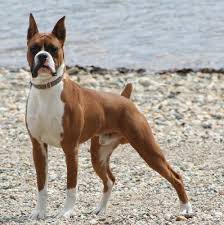
Breed Group : WORKING
Origin : Germany
Average Height : 21" - 25"
Average Weight : 50 - 80 lbs.
Life Span : 8 - 10 years
Photo Courtesy of : NorCal Boxer Rescue
Size
1 2 3 4 5 6 7 8 9 10Energy
1 2 3 4 5 6 7 8 9 10Intelligence
1 2 3 4 5 6 7 8 9 10Ease of Training
1 2 3 4 5 6 7 8 9 10Hypo-Allergenic
1 2 3 4 5 6 7 8 9 10Shedding
1 2 3 4 5 6 7 8 9 10Good with Kids
1 2 3 4 5 6 7 8 9 10Good with Other Pets
1 2 3 4 5 6 7 8 9 10Guard Dog
1 2 3 4 5 6 7 8 9 10
Boxer Rescue Organizations

Thonotosassa FL 33592 United States
The mission of Second Chance Boxer Rescue (SCBR) is to rescue, rehab, and re-home dogs throughout...

Atlanta GA 30126 United States
Atlanta Boxer Rescue is a non-profit organization that strives to rescue, medically rehabilitate,...

River Ridge LA 70123 United States
Louisiana Boxer Rescue (LaBR) is an all volunteer, non profit, tax exempt 501(c)(3) organization ...
Hampstead, NC 28443, United States
We rescue Boxers from shelters, human societies and directly from owners. We are a non-profit org...
Arden, NC 28704, United States
We do not currently have a facility and all of our dogs are in separate foster homes. Please cont...
Hickory, NC 28603, United States
Blue Ridge Boxer Rescue is a non-profit organization committed to the rescue and home placement o...
Conover, NC 28613, United States
We are a small family run 509(c)(3)non-profit animal rescue for unwanted and homeless dogs; Boxer...

Box 198 Conover NC 28613 United States
We are a small family run 509(c)(3)non-profit animal rescue for unwanted and homeless dogs; Boxer...

Dayton OH 45405 United States
937-277-4652 937-277-4652

PO Box 28171 Green Bay WI 54324 United States
GABR is a 501(c)(3) non-profit organization that’s been active since 1999. To date, we have...
-
The Boxer was developed in Germany in the 19th century.
The Boxer's ancestors were two German mastiff type dogs, the Bullenbeisser and the Barenbeiszer [Mastiff descendents] crossed with Bulldogs.
Early Boxers were used for dog fighting, bull baiting, cart pulling, as cattle dogs, to round up livestock and to catch and pin wild boar and bison until hunters could arrive. They later became popular theater and circus dogs.
The first Boxer studbook was started in 1904. Up until then the dogs varied widely in looks and size.
When Word War I broke out, Boxers were enlisted into the military, serving as messenger dogs, carrying packs, and acting as attack and guard dogs.
The Boxer is known for the way it uses its front legs to bat at its opponent, appearing to be boxing, most likely giving the dog its name.
Some of the Boxer's talents are watchdog, guarding, police work, military work, search and rescue, competitive obedience, Schutzhund and performing tricks. Breeders are breeding two types of Boxers, the German Boxer and the American Boxer.
German Boxers have bigger heads and are generally more muscular than American Boxers.
The Bullenbeisser had been used as a hunting dog for centuries to hunt bear, wild boar, and deer. It's task was to catch and hold the prey until hunters arrived. Over time, Bullenbeissers lost their jobs on estates and began to be used by farmers and butchers to guard and drive cattle.
The story 'of old' goes......
A Munich man named Georg Alt bred a brindle-colored female Bullenbeisser named 'Flora' with a local dog of unknown origin. In the litter was a fawn-and-white male that was named 'Lechner's Box'. .....This is believed to be the start of the line that would become the Boxer we know today.
Lechner's Box was bred to his dam 'Flora' and one of the litter was a female called 'Alt's Schecken'. She was registered as a Bierboxer , or what was considered to be a: Modern Bullenbeiser.
Schecken was then bred to an English Bulldog named 'Tom' that produced a dog named 'Flocki', who became the 1st Boxer to be entered in the German Stud Book after winning at a Munich show that had a special event for Boxers.
Flocki's sister, a white female, was even more influential when she was mated with 'Piccolo von Angertor', a grandson of Lechner's Box. One of her pups was a white female named 'Meta von der Passage', who is considered to be the mother of the Boxer breed even though photographs of her show that she bore little resemblance to the modern Boxer of today.
John Wagner, author of The Boxer (first published in 1939) said the following about her:
"Meta von der Passage played the most important role of the five original ancestors. Our great line of sires all trace directly back to this female. She was substantially built, low to the ground, brindle and white ~ parti-color, lacking in underjaw and exceedingly lippy. As a producing bitch few in any breed can match her record.
She consistently whelped puppies of marvelous type and rare quality. Those of her offspring sired by 'Flock St. Salvator' and 'Wotan' dominate all present day Boxers."
In 1894, three Germans named Robert, Konig, and Hopner decided to stabilize the breed and put it on exhibition at a dog show in Munich in 1895, and the next year they founded the first Boxer Club.
The breed became known in other parts of Europe in the late 1890s as well. Around 1903, the first Boxers were imported into the U.S.
The first Boxer was registered by the American Kennel Club in 1904, a dog named Arnulf Grandenz.
In 1915, the American Kennel Club (AKC) recognized the first Boxer champion, Sieger Dampf v Dom, owned by Governor and Mrs. Lehman of New York. ***Unfortunately, there weren't many female Boxers in the U.S. to breed to him, so he didn't have much influence on the breed.
Boxers started really becoming popular in the U.S. in the 1940s when soldiers coming home from World War II brought their Boxer mascots with them. Through them, the breed was introduced to more people and soon became a favorite companion animal, show dog, and guard dog.
Today, the Boxer ranks 7th in popularity by the AKC.
-
Boxers are one of our most popular breeds.
Boxers drool, a lot.
Boxers also snore ~ loudly.
Boxers Shed ~ especially in the Spring.
Boxers are high-energy, exuberant dogs ~ need a lot of exercise.
Early, consistent training is a must.
Boxers are intelligent are respond well to owners they respect. Treat gentle, firmly, fairly and make it fun, otherwise they will respond 'stubbornly'.
Boxers are not an 'outdoor dog'.
Their short noses & short hair make them uncomfortable in hot and cold weather. They need to be kept indoors, except when exercising.
Boxers are known to mature slowly ~ therefore act puppish longer than other breeds.
Boxers need to be around family, do not do well left along ~ which will lead them to be destructive and even possibly ill-tempered.
Some boxers are great guard dogs, others not [individual preferences].
Temperament
Normally very relaxed when older, boxers can be quite a handful as pups. However, they will reward you with a lifetime of faithful service if you keep up with their early training.
Boxers are best loved for their temperament that is intelligent and very loyal. They are rather affectionate and will love to join you on the couch, preferring to be near their owners whenever possible.
They are often distrustful of strangers unless you really work on this aspect of their training when very small puppies. Otherwise, Boxers will very loudly announce visitors to your home and might make a point of diligently putting themselves between your self and your guests.
Typically, Boxers don't really calm down until they're two or three, though their physical development is usually over by 18 months. This means your early training can seem as if it's falling on deaf ears though it actually isn't. In fact, your dog may seem to rather suddenly realize what you've been telling him or her all along one day.
Though courteous to other animals in your home that they're brought up with, they have a tendency to chase after cats and other small animals that aren't part of their pack. If you have neighbors with cats, it's best to make it a point to keep your Boxer either well away from them or train them well not to take off after them.
Punitive punishments rarely work with Boxers and, like many other dogs, are far more responsive to reward training. Many people have great results when training their boxers to a click or well-chosen set of commands. Click training has become very popular lately and they take rather well to it since it's reward based.
They remain very playful late into their lives, which are somewhat longer than most big dogs. Boxers love to roughhouse and are very happy to play with human companions, just as they might with another dog.
Health Problems
Boxers are prone to quite a few disorders. They have been inbred for over 100 years and in order to keep their appearance, there are several associated disorders. The breed also has one particular congenital defect related to coat colour.
Deafness: Somewhere between 20-40% of white puppies will be deaf in one or both ears. Such dogs were once put down to keep the trait from spreading, as long as there's white in the breed, 1/4 of the pups will come out white when born.
Heat disorders: Aortic Stenosis and Arrhythmogenic Right Ventricular Cardiomyopathy are both congenital defects that manifest when your Boxer is older.
Grooming
Taking care of their coat is a very simple affair, since there is so little of it. A regular rubbing with a hound cloth is often enough, though many boxers like the skin stimulation of a rubber comb.
They are very clean dogs and often will actually keep themselves preened like a cat. Usually if they do require a bath, it's more of an annual event than a regularly scheduled one.
Their nails are never black, so it's easy for owners to clip them. Be sure to keep an eye on their dewclaws if not removed - they don't wear down with regular exercise as the other claws do and may need trimming as often as every week or two.
Boxers that have had their ears bobbed should have their ears regularly examined for wax build up and the presence of mites. You should never, ever put q-tips in your dog's ear canal. Instead you should pull the ear up and use a gauze pad around the tip of your finger to clean around the outside of the ear canal.
If a Boxer's ears are manipulated when he or she is young, there will be a period of recovery from the surgery, often a week or two at least. Usually your dog will come home with ear splints. Sometimes an Elizabethan collar is used, but many owners are able to keep the dog from too vigorously shaking his or her ears and scratching at them by simply keeping an eye on them.
It's a very good idea to get your pup used to having grooming done by touching his or her ears and paws regularly when they're young. Your dog's minimal "beauty" sessions should be pleasant events that result in treats and praise. If they choose to resist, they can put up quite a fight.
Exercise
Boxers are large dogs that can certainly benefit from at least an hour of good exercise every day. Joggers will find them perfect workout companions - walks aren't usually quite enough and they need them every day without fail.
They do best when allowed to run around in a rural environment, though many urban owners are able to successfully keep them in small spaces if there's a large park nearby. Off-leash dog parks are ideally suited to the urban or suburban Boxer.
When letting them run around in even a large yard, you should take extra care to be sure the fence is absolutely secure. These dogs have been known to pick locks and jump over fences - they are prone to escape, though usually not roving as long as male dogs are altered.
Training
Boxers require a great deal of firm training to keep their exuberance in check. Training should begin when they're quite young, since they can become difficult to handle even when still puppies since they're so large and strong.
Though you should be consistent and firm with Boxers (and many other large dogs), they do not respond to punitive punishment. It is best to set things up so they can't help but succeed, then reward them for it. Some small treats and praise should be used in conjunction for the desired result.
Some lines can be hyperactive and there is little to be done with such dogs other than trying to wear them out in a rural setting. When buying a pup it is good to check the parents for this trait, as they can have a hard time settling down to learn when too wound up.
Almost all puppies are fun-loving clowns that take a few years to really grow up from a psychological point of view. Because they are intelligent, you should never underestimate their ability to break out. Their soft mouths have been known to manipulate locks on doors when left to the task long enough.
Housebreaking is usually quick since Boxers are so fastidious. Keeping an eye on your dog and shuffling them outside whenever they start towards the door or sniffing will give them a chance to get it right and earn your treats and respect. The key with this type of training vigilance upon your part, tough at least these dogs are large enough that they won't be able to sneak under the furniture and get away with it
Many people have had good result with using crates. As long a they're large enough for your dog to stand up and turn around in, they will come to think of them as a home and refuge. Of course, such a crate for a Boxer is rather large, so most people use classical methods of training.
Though somewhat stubborn, Boxers do generally want to please, and it's up to you to make them actually want to follow your commands. Aggression should be nipped in the bud, though most boxers are simply enthusiastic and curious.







